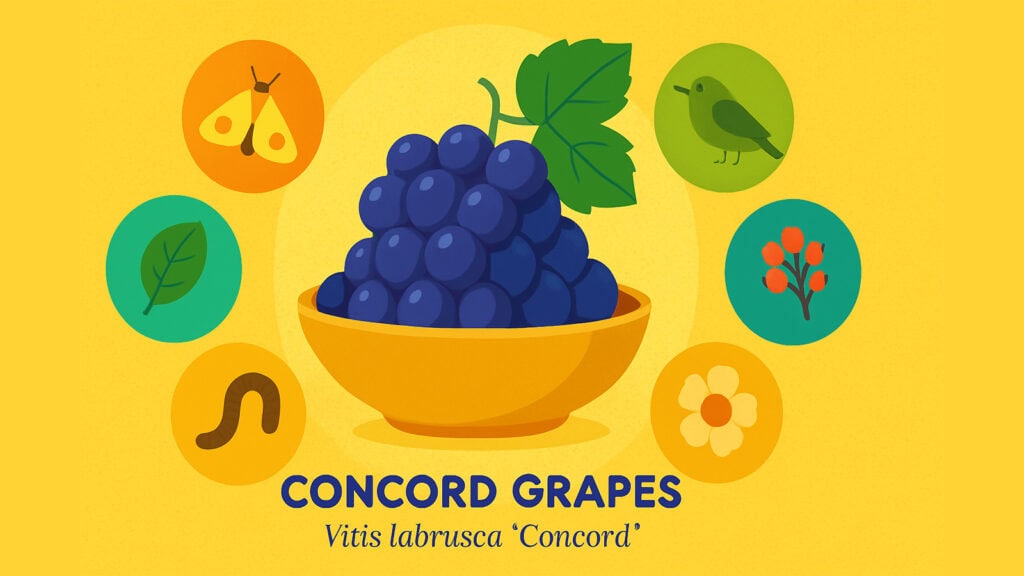Table of Contents
Introduction: The Concord Grape as a Native Biodiversity Champion
The Concord Grape, a variety of Fox Grapes (Vitis labrusca) belonging to the Vitaceae family, possesses greater ecological significance than many individuals understand. Scientifically, this perticular grape variety is known as Vitis labrusca ‘Concord’. As a North American native derived from the Fox grape, it’s more than a fruit—it’s a living hub for wildlife, pollinators, and plant resilience. This article uncovers how Concord Grapes quietly sustain biodiversity across multiple ecological layers, from the forest floor to the treetop.
When Ephraim Wales Bull developed the Concord Grape in Massachusetts during the 1840s, he created something remarkable from wild Fox grapes. These hardy vines adapted to harsh New England winters while maintaining their deep connections to native ecosystems. Unlike European wine grapes that struggle with North American pests and diseases, Concord Grapes thrive because they evolved alongside native insects, birds, and soil organisms.
The ecological story of Concord Grapes begins with their unique position as both cultivated and wild plants. Many escaped cultivation and naturalized in forest edges, streambanks, and abandoned fields. These feral populations bridge the gap between human agriculture and wild ecosystems, creating corridors where native species can flourish.
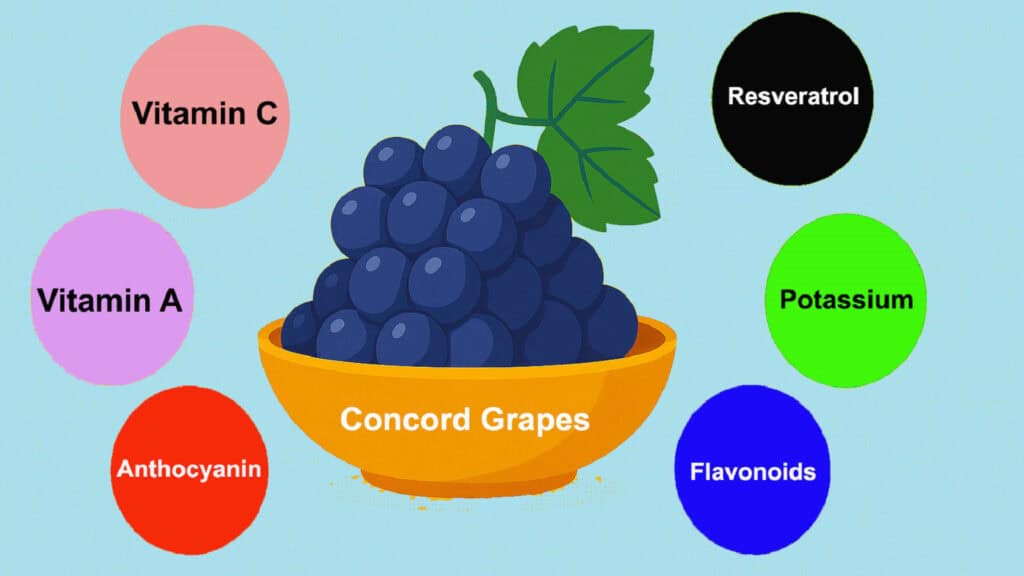
Table 1: Nutritional Profile of Concord Grapes
| Component | Abundance Level |
|---|---|
| Vitamin C | Moderate |
| Vitamin K | Trace |
| Vitamin A | Trace |
| Potassium | Moderate |
| Manganese | Trace |
| Calcium | Trace |
| Anthocyanins | Copious |
| Resveratrol | Moderate |
| Flavonoids | Copious |
| Proanthocyanidins | Moderate |
Table 2: Comparison of Concord Grapes with Other Grape Varieties
| Characteristic | Concord Grapes | Muscadine Grapes | Common Grapes | Catawba Grapes | Scuppernongs |
|---|---|---|---|---|---|
| Native Region | Northeastern US | Southeastern US | Europe/Mediterranean | Eastern US | Southeastern US |
| Cold Hardiness | Excellent | Poor | Variable | Good | Poor |
| Disease Resistance | High | Very High | Low to Moderate | Moderate | Very High |
| Wildlife Value | High | Very High | Moderate | High | Very High |
| Skin Thickness | Thick | Very Thick | Thin | Moderate | Very Thick |
| Seed Size | Large | Large | Small | Medium | Large |
| Bloom Period | Late Spring | Late Spring | Early Spring | Late Spring | Late Spring |
| Fruit Cluster Size | Large | Small | Medium to Large | Medium | Small |
1. Concord Grape Leaves Host Native Insect Life
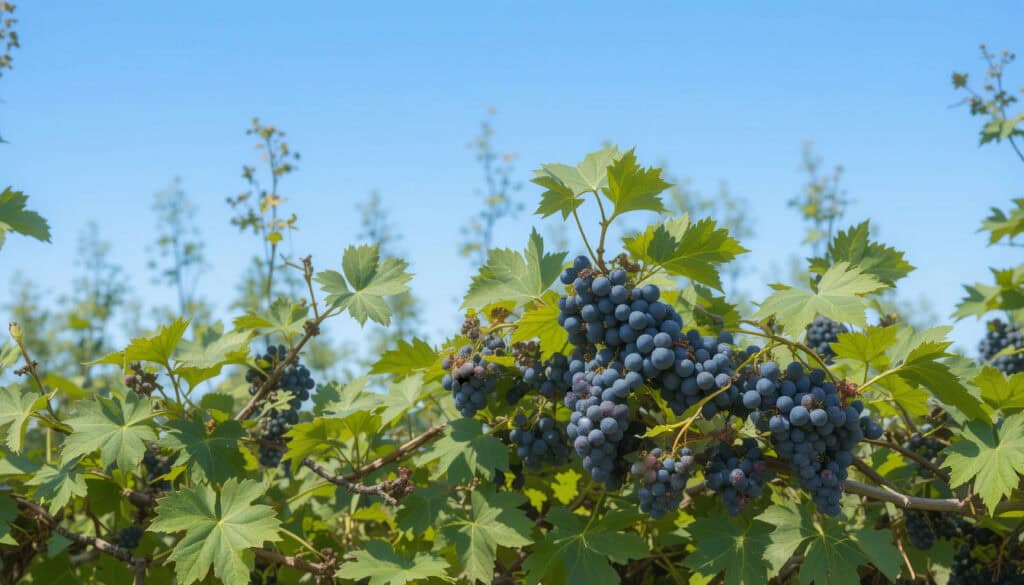
Concord Grape vines support numerous native moths and butterfly larvae. These insects are critical food sources for birds and help drive pollination cycles. By feeding native caterpillars, these Grape becomes part of the forest’s energy system. The leaves of Concord Grapes serve as nurseries for dozens of native moth and butterfly species. Grape sphinx moths deposit their eggs on the lower surfaces of grape leaves, where their sizable green caterpillars consume foliage during the summer months. These impressive larvae, sometimes called hornworms, can reach four inches long and provide substantial meals for birds like woodpeckers and flycatchers.
Smaller moths also depend on Concord Grape foliage. The Grapevine Epimenis moth, Eight-spotted Forester, and various species of clearwing moths complete their life cycles on these vines. Each species has evolved specific feeding behaviors and timing that minimize competition while maximizing survival. The relationship between these Grapes and native insects extends beyond simple leaf-eating. Some insects have developed mutualistic relationships with the vines. Certain aphid species feed on grape sap while producing honeydew that attracts beneficial insects like parasitic wasps and predatory beetles. This creates a complex web of interactions that supports biodiversity at multiple levels.
Table 3: Native Insects Associated with Concord Grape Vines
| Insect Species | Life Stage on Grape | Ecological Role | Seasonal Activity |
|---|---|---|---|
| Grape Sphinx Moth | Larval feeding | Bird food source | Summer |
| Eight-spotted Forester | Larval feeding | Pollinator as adult | Spring-Fall |
| Grapevine Epimenis | Larval feeding | Decomposer food web | Summer |
| Grape Phylloxera | Root feeding | Soil aeration | Year-round |
| Clearwing Moths | Larval boring | Vine pruning | Spring-Summer |
| Grape Leafhopper | Sap feeding | Nutrient cycling | Summer |
| Japanese Beetle | Adult feeding | Bird food source | Summer |
| Grape Berry Moth | Fruit feeding | Seed dispersal | Late Summer |
2. Concord Grape as a Keystone Vine in Food Webs
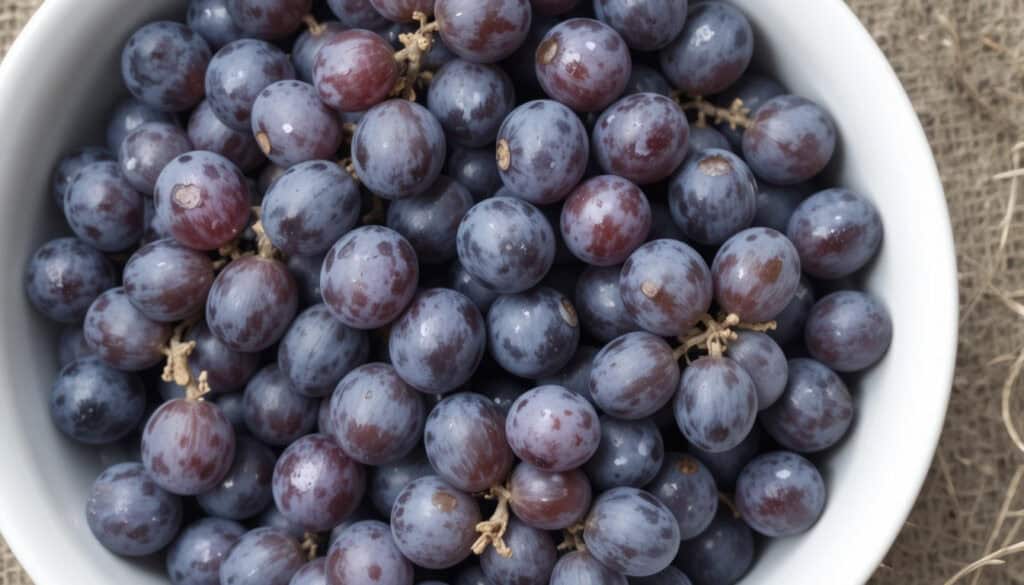
In many landscapes, Concord Grape functions as a keystone species—a plant whose presence disproportionately impacts its ecosystem. From birds to beetles, its berries and foliage serve as vital sustenance, proving the Concord Grape’s role is far larger than its size suggests. The keystone species concept, developed by ecologist Robert Paine, explains how certain organisms have effects on their ecosystems that far exceed their numerical abundance. Concord grapes exemplify this principle by supporting wildlife populations that would otherwise struggle in fragmented landscapes.
Research in abandoned agricultural areas shows that Concord Grape thickets support higher bird diversity than surrounding grasslands or crop fields. The vines create microhabitats with varying light levels, moisture conditions, and structural complexity. This habitat heterogeneity allows different species to coexist in relatively small areas. The timing of phenology (when leaves emerge, flowers bloom, and fruits ripen) of these grapes aligns perfectly with the life cycles of many native species. Spring leaf emergence provides fresh food for early-season caterpillars. Summer flowering feeds native bees when other nectar sources may be scarce. Fall fruit ripening coincides with migration periods and pre-winter fattening needs.
Table 4: Keystone Effects of Concord Grapes in Ecosystems
| Ecosystem Level | Direct Impact | Indirect Impact | Beneficiary Species |
|---|---|---|---|
| Primary Producers | Nitrogen fixation | Soil enrichment | Native herbs, grasses |
| Primary Consumers | Leaf palatability | Increased herbivore density | Moths, beetles, aphids |
| Secondary Consumers | Insect abundance | Higher predator success | Birds, spiders, wasps |
| Decomposers | Leaf litter quality | Enhanced nutrient cycling | Soil microbes, earthworms |
| Pollinators | Nectar availability | Extended foraging season | Native bees, butterflies |
| Seed Dispersers | Fruit abundance | Increased dispersal range | Birds, mammals |
3. Concord Grape Vines Provide Habitat and Cover
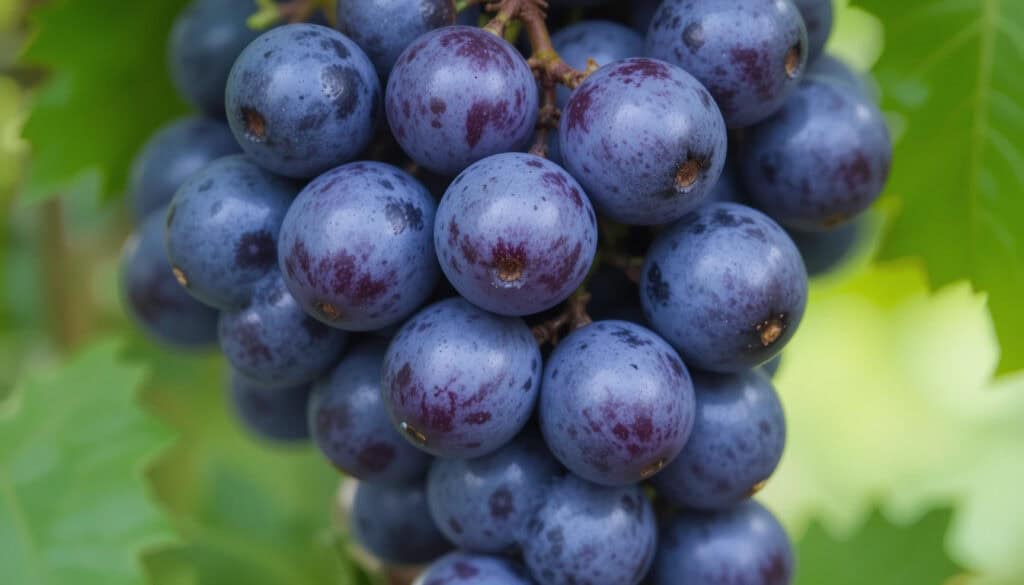
The dense, sprawling nature of Concord Grape vines offers shelter for ground birds, small mammals, and amphibians. These protective canopies also host spiders and beetles, adding another layer of biodiversity beneath the leaves.
Concord Grape vines create three-dimensional habitat structures that many native species have evolved to exploit.The intricate network of stems, leaves, and tendrils offers nesting locations at different elevations and densities. Ground-nesting birds like Brown Thrashers and Towhees find perfect cover in the lower portions of grape thickets.
The architecture of grape vines changes throughout the growing season, offering different habitat opportunities. Young shoots provide tender nesting material in spring. Dense summer foliage creates cool, humid microclimates that amphibians and reptiles seek during hot weather. Winter’s bare stems still offer wind protection and structural support for dormant insects.
Small mammals particularly benefit from grape vine cover. Chipmunks and squirrels use the vertical structure for quick escapes from predators. Rodents such as mice and voles discover safe pathways beneath the base of grape thickets. Even larger mammals like raccoons and opossums use grape tangles as daytime resting spots.
Table 5: Wildlife Habitat Provided by Concord Grape Vine Structure
| Habitat Zone | Physical Features | Wildlife Users | Seasonal Importance |
|---|---|---|---|
| Canopy Layer | Dense leaf cover | Song birds, flying insects | Summer shelter |
| Mid-story | Branching stems | Nesting birds, climbing mammals | Spring-Fall |
| Ground Level | Fallen leaves, low branches | Ground birds, small mammals | Year-round |
| Root Zone | Soil protection | Burrowing animals | Winter refuge |
| Vine Tangles | Intertwined stems | Escape cover | Year-round |
| Bark Crevices | Rough surface | Overwintering insects | Winter shelter |
4. Concord Grape Fruit Nourishes Birds and Mammals
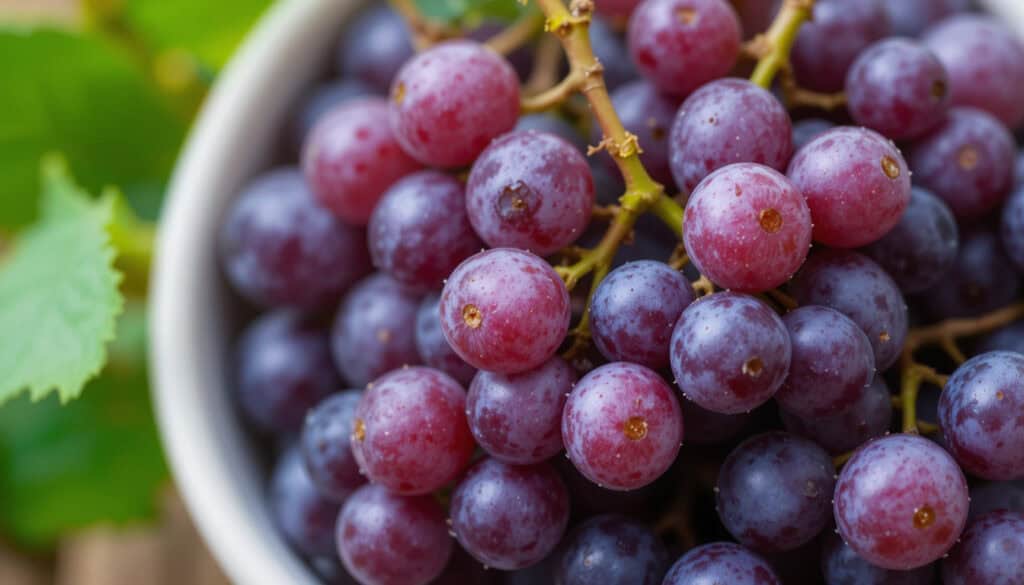
The juicy berries feed migratory and resident birds—cedar waxwings, thrashers, robins—and mammals like raccoons and squirrels. Concord Grape acts as an autumn calorie bank, supporting reproduction, migration, and winter preparation.
When Concord Grapes ripen in late summer and early fall, they become magnets for wildlife. The deep purple fruits contain high levels of natural sugars and antioxidants that provide essential energy for animals preparing for winter or long migrations. Unlike many cultivated fruits, Concord Grapes retain their wild characteristics that make them highly attractive to native species.
Cedar Waxwings deserve special mention as Concord Grape specialists. These sleek, nomadic birds time their movements to coincide with grape ripening across different regions. A single flock can consume thousands of grapes in a day, dispersing seeds across miles of landscape. Their efficient digestion allows seeds to pass through intact, often depositing them in ideal growing conditions far from the parent vine.
Mammals approach Concord Grapes differently than birds. Raccoons and opossums typically feed at night, using their dexterous paws to pluck individual grapes. Squirrels and chipmunks may cache some grapes for winter consumption, inadvertently planting new vines in the process. Even white-tailed deer browse on both fruit and foliage, especially during drought years when other food sources become scarce.
Table 6: Wildlife Species That Feed on Concord Grape Fruits
| Species Type | Common Species | Feeding Behavior | Seed Dispersal Role |
|---|---|---|---|
| Songbirds | Cedar Waxwing, Robin | Swallow whole fruit | Long-distance dispersal |
| Game Birds | Wild Turkey, Ruffed Grouse | Peck at fruit | Short-distance dispersal |
| Small Mammals | Squirrel, Chipmunk | Cache and eat | Medium-distance dispersal |
| Medium Mammals | Raccoon, Opossum | Consume on vine | Short-distance dispersal |
| Large Mammals | White-tailed Deer | Browse fruit and leaves | Variable dispersal |
| Insects | Yellowjacket, Hornets | Feed on overripe fruit | No dispersal |
5. Concord Grape Supports Pollinator Diversity
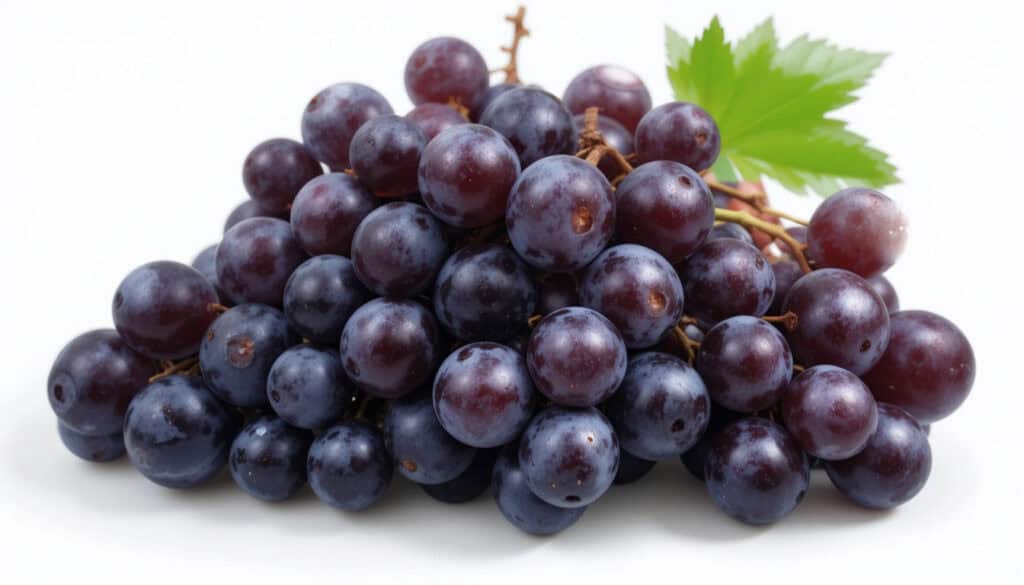
Through the lens of the Pollination Syndrome Framework, Concord Grape’s floral structure attracts specific pollinators—especially native bees—shaped by its scent, petal color, and bloom timing. This targeted interaction improves pollination efficiency and sustains native bee populations.
The Pollination Syndrome Framework, developed by plant ecologists, explains how flower characteristics evolve to attract specific groups of pollinators. Concord Grape flowers exhibit a “generalist bee syndrome” with their small, greenish-white petals, accessible nectar, and moderate fragrance. This combination appeals to various native bee species while remaining less attractive to specialized pollinators like hummingbirds or butterflies.
Concord Grape flowering coincides with a critical period for native bee populations. Many solitary bee species emerge from winter hibernation or complete their life cycles during late spring and early summer. The abundant, easily accessible nectar and pollen from grape flowers provide essential resources when other flowering plants may be scarce.
The pollen of Concord Grapes has unique nutritional properties that benefit bee health. In contrast to certain plant pollens that do not provide essential amino acids, grape pollen offers a comparatively comprehensive protein profile. This nutritional completeness helps support bee immune systems and reproductive success, creating a positive feedback loop that benefits both grapes and their pollinators.
Table 7: Pollinator Species Associated with Concord Grape Flowers
| Pollinator Type | Common Species | Foraging Behavior | Pollination Efficiency |
|---|---|---|---|
| Solitary Bees | Mason Bees, Leafcutter Bees | Nectar and pollen collection | High |
| Social Bees | Bumblebees, Honeybees | Consistent visitation | Moderate |
| Hover Flies | Syrphid Flies | Pollen feeding | Low |
| Small Beetles | Pollen Beetles | Pollen consumption | Low |
| Parasitic Wasps | Braconid Wasps | Nectar feeding | Negligible |
| Thrips | Flower Thrips | Pollen feeding | Negligible |
6. Concord Grape Encourages Soil Biodiversity and Health
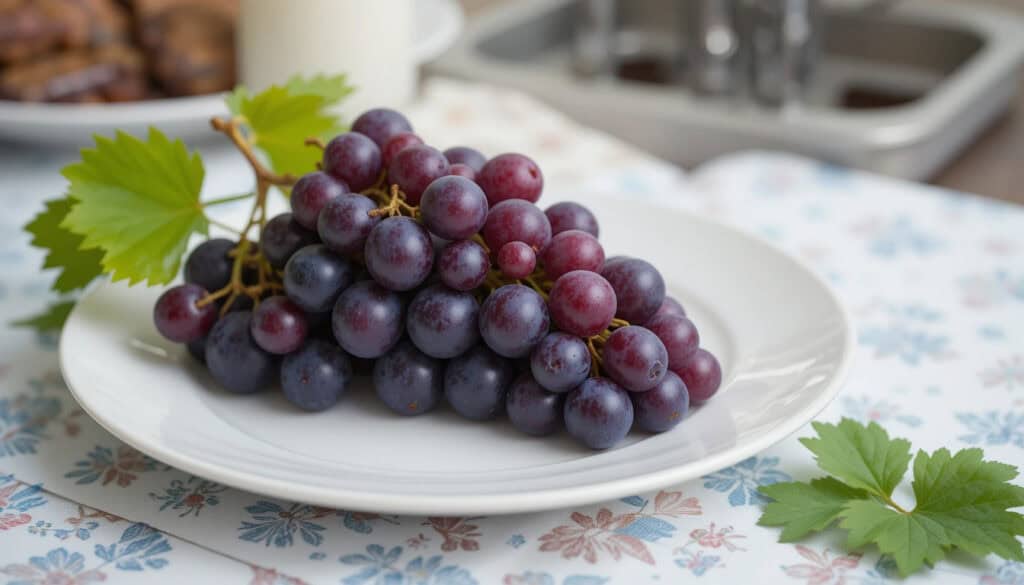
The root zone of Concord Grape vines hosts fungi, bacteria, and earthworms essential for nutrient cycling. When grown organically, these grapes help revive topsoil and prevent erosion by stabilizing the earth with their creeping root systems.
Beneath the visible portions of Concord Grape vines lies a hidden world of soil biodiversity. The root systems of these hardy vines extend both deep and wide, creating extensive networks that support diverse microbial communities. These underground partnerships benefit both the grapes and the surrounding ecosystem.
Mycorrhizal fungi establish notably significant associations with the roots of these Grapes. These beneficial fungi extend the effective root system of the vines, helping them access nutrients and water from greater distances. In return, the grapes provide carbohydrates to fuel fungal growth. This partnership creates an underground web that connects not only individual grape vines but also neighboring plants.
The soil beneath Concord Grape vines typically contains higher levels of organic matter than the surrounding areas. Fallen leaves, bark, and root turnover contribute to soil carbon storage. This organic material nourishes earthworms, soil mites, and a multitude of microscopic organisms that facilitate nutrient cycling. The improved soil structure also enhances water infiltration and reduces erosion.
Table 8: Soil Organisms Associated with Concord Grape Root Zones
| Organism Type | Common Species | Ecological Function | Benefit to Ecosystem |
|---|---|---|---|
| Mycorrhizal Fungi | Arbuscular Mycorrhizae | Nutrient exchange | Enhanced plant growth |
| Bacteria | Rhizobium, Azotobacter | Nitrogen fixation | Soil fertility |
| Earthworms | Nightcrawlers, Red Worms | Organic matter processing | Soil structure |
| Soil Mites | Oribatid Mites | Decomposition | Nutrient cycling |
| Nematodes | Bacterial-feeding species | Nutrient release | Soil health |
| Collembola | Springtails | Fungal control | Soil balance |
7. Concord Grape Coexists Well with Other Native Plants
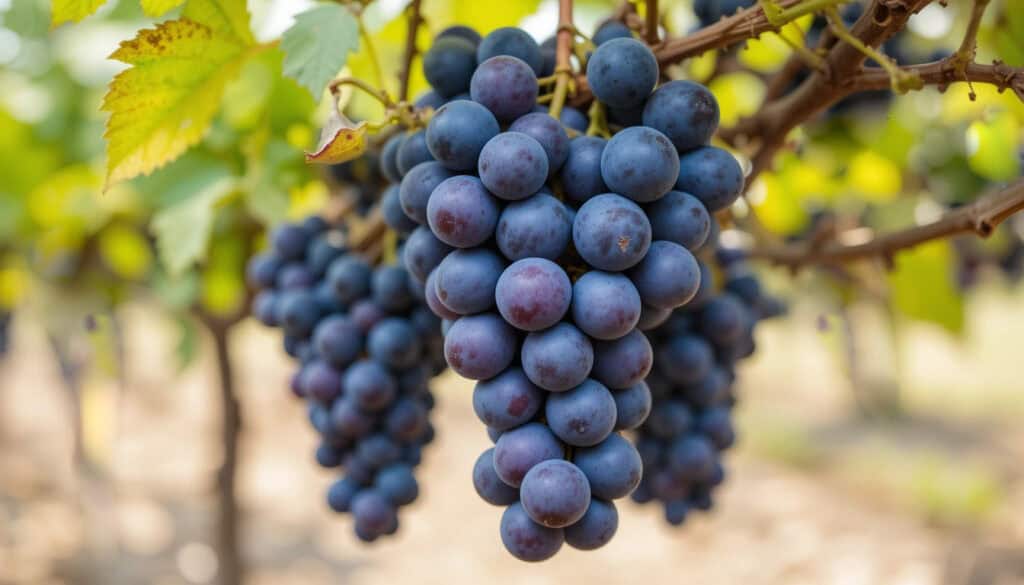
When included in native hedgerows or forest edges, Concord Grape vines don’t dominate or outcompete. They tangle around elderberries, serviceberries, and milkweed, boosting habitat variety and seasonal food availability. The compatibility of these purple grapes with other native plants makes them excellent choices for ecological restoration projects. Unlike invasive vines that can smother trees and shrubs, these grapes typically grow in harmony with established vegetation. Their climbing habit allows them to utilize vertical space without competing directly for ground-level resources.
In mixed plantings, Concord Grapes often enhance the success of companion plants. Their deep root systems bring nutrients from lower soil layers to the surface through leaf drop. The partial shade created by grape canopies can protect shade-tolerant understory plants from excessive heat and drought stress. The seasonal timing of the growth of these grapes complements that of many native plants. While trees and shrubs focus energy on early spring growth, grape vines remain dormant later into the season. This temporal separation reduces competition for soil moisture and nutrients during critical growth periods.
Table 9: Native Plants Compatible with Concord Grape Vines
| Plant Category | Common Species | Interaction Type | Mutual Benefits |
|---|---|---|---|
| Native Shrubs | Elderberry, Serviceberry | Structural support | Habitat diversity |
| Wildflowers | Milkweed, Goldenrod | Ground layer companion | Pollinator support |
| Native Trees | Oak, Maple | Vertical support | Canopy complexity |
| Ferns | Christmas Fern, Maidenhair | Shade tolerance | Soil protection |
| Grasses | Little Bluestem, Switchgrass | Edge habitat | Erosion control |
| Vines | Virginia Creeper, Bittersweet | Climbing partners | Structural diversity |
8. Concord Grape Demonstrates Resilience and Adaptive Traits

Resilience Theory explains how Concord Grape adapts to drought, pests, and fungal attacks better than many non-native grapes. This resilience allows it to support biodiversity over long ecological timeframes—even in degraded or changing habitats.
Ecological Resilience Theory, pioneered by ecologist C.S. Holling, describes how ecosystems maintain function despite disturbances. Concord Grapes embody this principle through their remarkable ability to persist and recover from environmental stresses. Their resilience stems from thousands of years of co-evolution with North American climate patterns, pests, and diseases.
The thick skins of Concord Grapes provide natural protection against fungal diseases that devastate European grape varieties. This resistance means fewer chemical treatments are needed, preserving beneficial insects and soil organisms. The vines can survive severe winter temperatures that kill less hardy grape varieties, maintaining habitat continuity through harsh seasons.
Drought tolerance represents another key resilience trait. Concord Grape vines develop extensive root systems that can access deep groundwater during dry periods. Their ability to shed leaves during extreme drought helps them survive conditions that would kill other fruiting plants. This persistence through difficult times maintains food resources for wildlife when other plants fail.
Table 10: Resilience Traits of Concord Grapes
| Stress Factor | Grape Response | Ecological Benefit | Timeline |
|---|---|---|---|
| Drought | Deep root development | Sustained habitat | Seasonal |
| Cold | Dormancy adaptation | Year-round presence | Annual |
| Pests | Natural resistance | Reduced chemical use | Ongoing |
| Disease | Thick skin protection | Healthy fruit production | Seasonal |
| Soil Poor | Mycorrhizal partnerships | Improved soil health | Multi-year |
| Flooding | Flexible stem structure | Erosion prevention | Seasonal |
Conclusion: Why the Concord Grape Belongs in Every Biodiverse Landscape
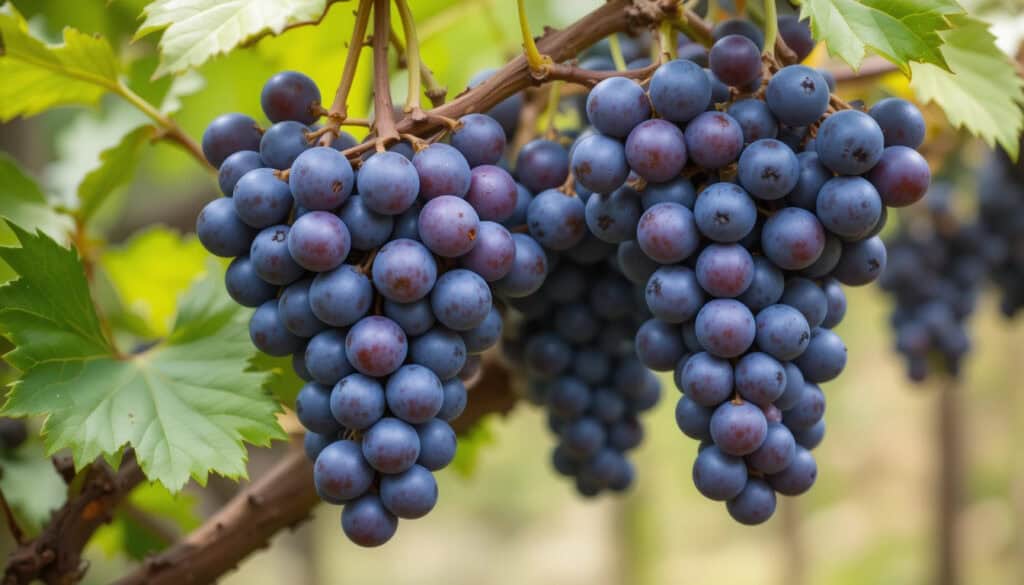
The Concord Grape is more than a nostalgic fruit or juice staple—it’s a native powerhouse. By hosting insects, feeding birds, stabilizing soil, and thriving under stress, it becomes a quiet yet powerful ally in ecological restoration. In a world facing biodiversity loss, planting and protecting Concord Grapes is not just sustainable—it’s essential.
The evidence presented throughout this exploration reveals the Concord Grape’s multifaceted contributions to native ecosystems. From the microscopic soil organisms that thrive in its root zone to the migrating birds that depend on its autumn fruits, these vines support biodiversity at every level. Their resilience ensures that these benefits continue even as environmental conditions change.
Modern conservation efforts increasingly recognize the importance of native plants in supporting wildlife populations. Concord Grapes offer a unique opportunity to bridge the gap between human land use and wild habitat needs. They provide food, shelter, and ecological services while requiring minimal management inputs.
The future of biodiversity conservation may well depend on our ability to recognize and protect plants like the Concord Grape. Their unassuming presence masks profound ecological importance. As we face challenges from climate change, habitat fragmentation, and species loss, the humble Concord Grape stands as a testament to the power of native plants to sustain life in all its forms.
In gardens, farms, and wild spaces across North America, Concord Grapes continue their ancient work of supporting biodiversity. Their story reminds us that conservation often begins with the simple act of allowing native plants to flourish. Every vine of these amazing purple grapes represents a small victory for native biodiversity—a living link between the past and a more sustainable future.

